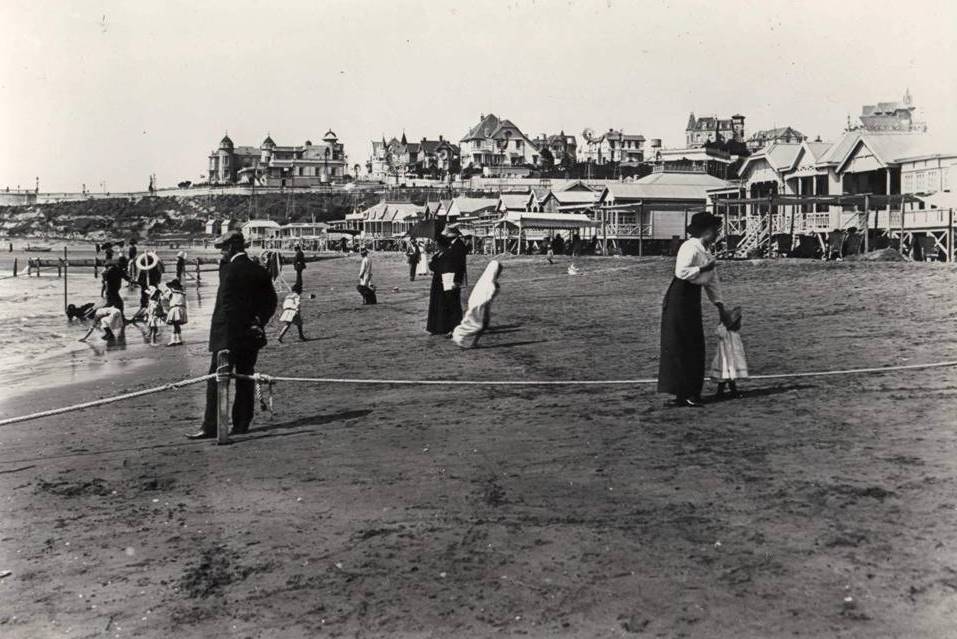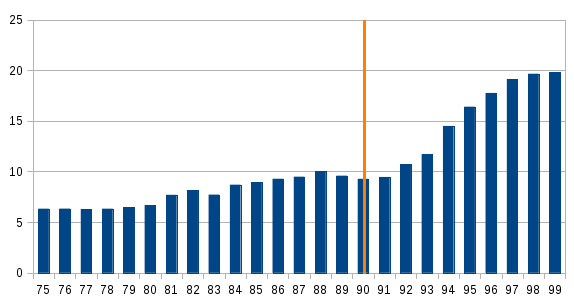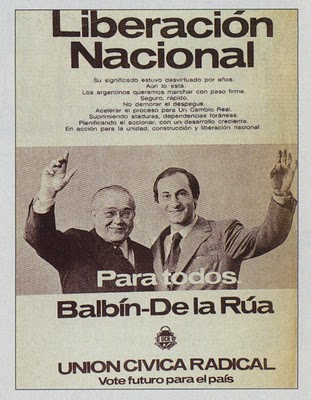|
Chapadmalal
Chapadmalal compound is an official retreat of the president of Argentina. It is located on the southern coast of Mar del Plata, in the Buenos Aires Province, and serves as a summer residence. It has a hotel complex nearby. The compound was built in 1947, during the presidency of Juan Perón. Raúl Alfonsín only used it on limited occasions. Carlos Menem ordered several improvements, such as a fishing wharf, a higher pool and a shrine. Fernando de la Rúa used it for interviews. During the December 2001 riots in Argentina, 2001 Argentine crisis, Adolfo Rodríguez Saá called a summit of governors to it, which was attended by only five; this lack of support led to his resignation. Néstor Kirchner, Néstor and Cristina Fernández de Kirchner, Cristina Kirchner did not use it, only their sons visited it on occasions. Mauricio Macri used it for a meeting of his cabinet in a less formal environment. References Houses completed in 1947 Official residences in Argentina Build ... [...More Info...] [...Related Items...] OR: [Wikipedia] [Google] [Baidu] |
President Of Argentina
The president of Argentina, officially known as the president of the Argentine Nation, is both head of state and head of government of Argentina. Under Constitution of Argentina, the national constitution, the president is also the Head of government, chief executive of the Government of Argentina, federal government and commander-in-chief of the Armed Forces of the Argentine Republic, armed forces. Throughout Argentine history, the List of heads of state of Argentina , office of head of state has undergone many changes, both in its title as in its features and powers. The current president Javier Milei was sworn into office on 10 December 2023. He succeeded Alberto Fernández. The constitution of Argentina, along with several constitutional amendments, establishes the requirements, powers, and responsibilities of the president, the term of office and the method of election. History The origins of Argentina as a nation can be traced to 1776, when it was separated by King Ch ... [...More Info...] [...Related Items...] OR: [Wikipedia] [Google] [Baidu] |
Mar Del Plata
Mar del Plata is a city on the coast of the Argentine Sea, Atlantic Ocean, in Buenos Aires Province, Argentina. It is the seat of General Pueyrredón Partido, General Pueyrredón district. Mar del Plata is the second largest city in Buenos Aires Province. The name "Mar del Plata" is short for "Mar del Río de la Plata," and means "sea of the Río de la Plata basin" or "adjoining sea to the (River) Plate region." Mar del Plata is one of the major fishing ports and the biggest seaside Balneario, beach resort in Argentina. With a population of 682,605 as per the , it is the List of cities in Argentina by population, 5th largest city in Argentina. History Pre-Spanish era: The region was inhabited by ''Günuna Kena'' nomads (also known as northern Tehuelche people, Tehuelches). They were later (after the 11th century) strongly influenced by the Mapuche culture. 1577–1857: First European explorers. Francis Drake, Sir Francis Drake made a reconnaissance of the coast and its s ... [...More Info...] [...Related Items...] OR: [Wikipedia] [Google] [Baidu] |
December 2001 Riots In Argentina
The December 2001 crisis, sometimes known as the Argentinazo (), was a period of civil unrest and rioting in Argentina, which took place during December 2001, with the most violent incidents taking place on 19 and 20 December in the capital, Buenos Aires, Rosario and other large cities around the country. It was preceded by a popular revolt against the Argentine government, rallying behind the motto "All of them must go!" (), which caused the resignation of then-president Fernando de la Rúa, giving way to a period of political instability during which five government officials performed the duties of the Argentine presidency. This period of instability occurred during the larger period of crisis known as the Argentine great depression, an economic, political, and social crisis that lasted from 1998 until 2002. The December 2001 crisis was a direct response to the government's imposition of "Corral" policies () at the behest of economic minister Domingo Cavallo, which res ... [...More Info...] [...Related Items...] OR: [Wikipedia] [Google] [Baidu] |
Adolfo Rodríguez Saá
Adolfo Rodríguez-Saá (; born 25 July 1947) is an Argentina, Argentine Peronism, Peronist politician. Born in a family that was highly influential in the history of the San Luis Province, he became the province's Governor of San Luis, governor in 1983, after the end of the National Reorganization Process military dictatorship. He remained governor up to 2001, being re-elected in successive elections. President Fernando de la Rúa resigned in that year, amid the December 2001 riots in Argentina, December 2001 riots, and the Congress elected Rodríguez Saá as the president of Argentina. In response to the 1998–2002 Argentine great depression, he declared the highest sovereign default in history and resigned days later amid civil unrest. The Argentine Congress, Congress elected a new president, Eduardo Duhalde, in order to complete the term of office of de la Rúa (but Duhalde failed to do so, and eventually that term was completed by Néstor Kirchner, instead). Rodríguez Sa ... [...More Info...] [...Related Items...] OR: [Wikipedia] [Google] [Baidu] |
Buenos Aires Province
Buenos Aires, officially the Buenos Aires Province, is the largest and most populous Provinces of Argentina, Argentine province. It takes its name from the city of Buenos Aires, the capital of the country, which used to be part of the province and the province's capital until it was Federalization of Buenos Aires, federalized in 1880. Since then, in spite of bearing the same name, the province does not include Buenos Aires city, though it does include all other parts of the Greater Buenos Aires metropolitan area. The capital of the province is the city of La Plata, founded in 1882. It is bordered by the provinces of Entre Ríos Province, Entre Ríos to the northeast, Santa Fe Province, Santa Fe to the north, Córdoba Province, Argentina, Córdoba to the northwest, La Pampa Province, La Pampa to the west, Río Negro Province, Río Negro to the south and west and the Autonomous City of Buenos Aires to the northeast. Uruguay is just across the Rio de la Plata to the northeast, and bo ... [...More Info...] [...Related Items...] OR: [Wikipedia] [Google] [Baidu] |
Juan Perón
Juan Domingo Perón (, , ; 8 October 1895 – 1 July 1974) was an Argentine military officer and Statesman (politician), statesman who served as the History of Argentina (1946-1955), 29th president of Argentina from 1946 to Revolución Libertadora, his overthrow in 1955 and again as the 40th president from 1973 to his death in 1974. He is the only Argentine president elected three times and holds the September 1973 Argentine presidential election, highest percentage of votes in clean elections with universal suffrage. Perón is arguably the most important and controversial Argentine politician of the 20th century and his influence extends to the present day. Perón's ideas, policies and movement are known as Peronism, which continues to be one of the major forces in Argentine politics. On 1 March 1911, Perón entered military college, graduating on 13 December 1913. Over the years, he rose through the military ranks. In 1930, Perón supported the coup against President Hipólito ... [...More Info...] [...Related Items...] OR: [Wikipedia] [Google] [Baidu] |
Raúl Alfonsín
Raúl Ricardo Alfonsín (; 12 March 1927 – 31 March 2009) was an Argentine lawyer and statesman who served as President of Argentina from 10 December 1983 to 8 July 1989. He was the first democratically elected president after the 7-years National Reorganization Process. Ideologically, he identified as a Radicalism (historical), radical and a social democrat, serving as the leader of the Radical Civic Union from 1983 to 1991, 1993 to 1995, 1999 to 2001, with his political approach being known as "Alfonsinism". Born in Chascomús, Buenos Aires Province, Alfonsín began his studies of law at the National University of La Plata and was a graduate of the University of Buenos Aires. He was affiliated with the Radical Civic Union (UCR), joining the faction of Ricardo Balbín after the party split. He was elected a deputy in the legislature of the Buenos Aires province in 1958, during the presidency of Arturo Frondizi, and a national deputy during the presidency of Arturo Umber ... [...More Info...] [...Related Items...] OR: [Wikipedia] [Google] [Baidu] |
Carlos Menem
Carlos Saúl Menem (2 July 1930 – 14 February 2021) served as the 50th president of Argentina for ten years, from 1989 to 1999. He identified as Peronism, Peronist, serving as President of the Justicialist Party for 13 years (from 1990 to 2001 and again from 2001 to 2003), and his political approach became known as Menemism. Born in Anillaco, La Rioja Province, Argentina, La Rioja, to a Syrian Argentines, Syrian family, Menem was raised as a Muslim,"Carlos Menem" ''Encyclopædia Britannica'' but later converted to Catholic Church, Roman Catholicism to pursue a political career. Menem became a Peronist during a visit to Buenos Aires. He was elected governor of La Rioja in 1973, deposed and detained following the 1976 Argentine coup d'état, and re-elected in 1983. He defeated the Buenos Aires governor Antonio Cafiero in ... [...More Info...] [...Related Items...] OR: [Wikipedia] [Google] [Baidu] |
Fernando De La Rúa
Fernando de la Rúa (15 September 19379 July 2019) served as the President of Argentina from 1999 until his resignation in 2001. A member of the Radical Civic Union, he previously served as national senator for Buenos Aires across non-consecutive terms from 1973 to 1996, national deputy for Buenos Aires from 1991 to 1992, the first Chief of Government of Buenos Aires between 1996 and 1999, and President of the National Committee of the Radical Civic Union from 1997 to 1999. De la Rúa was born in Córdoba, Argentina, Córdoba, and entered politics after graduating with a degree in law. He was elected senator in 1973 and unsuccessfully ran for the office of Vice President as Ricardo Balbín's running mate the same year. He was re-elected senator in 1983 and 1993, and as deputy in 1991. He unsuccessfully opposed the pact of Olivos between President Carlos Menem and party leader Raúl Alfonsín, which enabled the 1994 amendment of the Argentine Constitution and the re-election of M ... [...More Info...] [...Related Items...] OR: [Wikipedia] [Google] [Baidu] |
Néstor Kirchner
Néstor Carlos Kirchner Ostoić (; 25 February 195027 October 2010) was an Argentine lawyer and politician who served as the president of Argentina from 2003 to 2007. A member of the Justicialist Party, he previously served as Governor of Santa Cruz Province from 1991 to 2003, and mayor of Río Gallegos from 1987 to 1991. He later served as first gentleman of Argentina during the early tenure of his wife, Cristina Fernández de Kirchner, the first (and only) person to serve in this role. Ideologically, he identified himself as a Peronist and a progressive, with his political approach called Kirchnerism. Born in Río Gallegos, Santa Cruz, Kirchner studied law at the National University of La Plata. He met and married Cristina Fernández at this time, returned with her to Río Gallegos at graduation, and opened a law firm. Commentators have criticized him for a lack of legal activism during the Dirty War, an issue he would involve himself in as president. Kirchner ran fo ... [...More Info...] [...Related Items...] OR: [Wikipedia] [Google] [Baidu] |
Cristina Fernández De Kirchner
Cristina Elisabet Fernández de Kirchner (; born 19 February 1953), often referred to by her initials CFK, is an Argentine lawyer and former politician who served as the 56th president of Argentina from 2007 to 2015, and later as the 37th Vice President of Argentina, vice president under President Alberto Fernández from 2019 to 2023. The widow of Néstor Kirchner, she was also First ladies and gentlemen of Argentina, First Lady during his presidency from 2003 to 2007. She was the second female president of Argentina (after Isabel Perón) and the first to be directly elected to office. Ideologically self-identified as a Peronist and a Progressivism, progressive, her political approach is called Kirchnerism. Since 2024, she has been the president of the Justicialist Party, the main opposition party to incumbent President Javier Milei. Born in La Plata, Buenos Aires Province, she studied law at the University of La Plata, and moved to Río Gallegos, Santa Cruz, with her husband N� ... [...More Info...] [...Related Items...] OR: [Wikipedia] [Google] [Baidu] |









